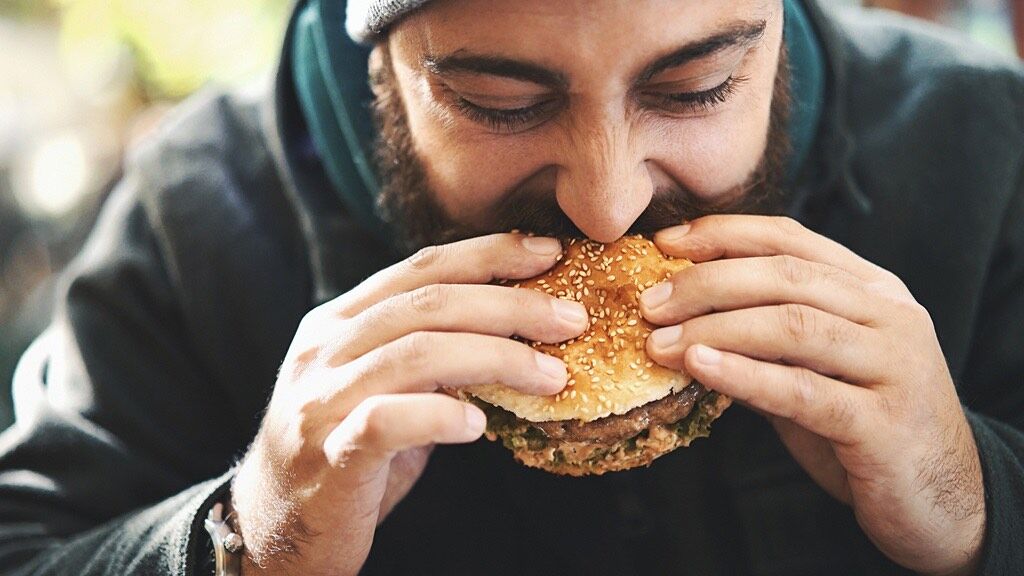Hyderabad: As India marks Anti-Obesity Day, nutrition researchers are drawing attention to an overlooked factor in weight gain: the speed at which we eat.
New discussions in clinical nutrition circles emphasise that eating quickly may disrupt the body’s natural fullness cues, leading people to consume more than they realise.
To address this, physicians and behavioural scientists are recommending a simple protocol, the 30-second bite rule, to slow eating and allow the brain more time to register fullness.
The Science Behind Eating Speed
Hunger and satiety rely on a network of signals from the stomach, intestines, and brain. Many of these signals, including hormones like GLP-1 and PYY, take roughly 15–25 minutes to communicate that the body has had enough food.
When meals are eaten rapidly, often in under ten minutes, this delay becomes a mismatch. By the time the brain catches up, the plate is already empty.
“People often underestimate how long satiety takes to develop,” Dr. Nihaar Raghavan, who works with metabolic syndrome patients, told NewsMeter. “If someone finishes a meal too quickly, they’re essentially eating past the point their body needed.”
Researchers say this pattern is increasingly common in urban India, where lunch breaks are shorter, nights are longer, and meals are frequently squeezed between work tasks.
What Studies Are Indicating
Although the amount of research varies across populations, several global studies from controlled feeding trials to long-term observational work consistently show that fast eaters tend to consume more calories per meal and also report higher body weight over time.
A recent behavioural study examined what happened when participants were instructed to slow down. The group that took longer to chew and swallow consumed fewer calories but reported greater satisfaction from the same meal.
“These findings keep repeating across different age groups,” said Dr. Kavitha Reddy, a clinical dietitian who consults for weight-management programmes. “The pattern is simple: slower eating leads to clearer satiety signals, and that leads to reduced intake.”
Why Indians Are Eating Faster
Nutritionists point to social and structural reasons:
• Short meal windows: Office workers, especially in IT hubs like Hyderabad and Bengaluru, often have 10–12 minutes between meetings.
• Late-night routines: Families that eat after 9:30 pm tend to eat faster due to fatigue or the desire to finish quickly.
• Soft, easy-to-eat foods: Ultra-processed foods require minimal chewing, enabling rapid intake.
• Cultural pressure: At social gatherings, guests often feel expected to “finish quickly and move aside,” encouraging speed-eating.
“Much of India’s food culture has shifted from sit-down meals to convenience eating,” said public health researcher Dr. Shazia Merchant. “Convenience almost always equals speed.”
Introducing the 30-Second Bite Rule
To counter rushed eating habits, experts propose a practical behavioural tool: keep at least 30 seconds between bites.
The rule is not about counting seconds obsessively. Instead, it is meant to create a consistent pause that expands meal duration to the recommended 20–30 minutes, the period during which satiety hormones begin acting effectively.
The technique usually involves:
• Putting the fork or spoon down after each bite
• Chewing until the food is fully broken down
• Taking a sip of water between bites
• Aiming for a calm, uninterrupted meal window
“When people follow this pattern, they naturally eat less without feeling deprived,” said Dr. Menon. “It changes the tempo of the meal, not the food itself.”
Real-Life Barriers, And How People Are Working Around Them
Time pressure
For workers with limited breaks, the fix often lies in meal prep: pre-cut boxes of vegetables and proteins that require more chewing and slow the meal naturally.
Social settings
At weddings or family gatherings, people tend to eat quickly to avoid crowding. Dietitians suggest taking smaller portions and pacing bites with conversation.
Fast-digesting foods
Soft foods like breads, noodles, and processed snacks are easy to swallow quickly. Experts recommend including at least one “chewy” element, raw vegetables, whole grains, or legumes, to regulate pace.
Who Benefits the Most
Children, adolescents, and adults trying to manage weight may benefit substantially. Paediatric nutritionists say teaching slower eating early can help children develop better long-term appetite regulation.
For adults with obesity or metabolic syndrome, slow eating is now used as part of behavioural therapy. It does not replace medication or structured diets, but clinics report modest improvements in calorie awareness, portion control, and even digestive comfort.
However, clinicians caution that people with eating disorders should follow such methods only under professional supervision.
A Tool, Not a Cure
Public health experts view the 30-second rule as one of several low-cost interventions that can be integrated into workplaces, schools, and homes.
“It won’t solve obesity by itself,” said Dr. Raghavan. “But it is a scalable habit that gives biological satiety mechanisms the time they need. If a population adopts slower eating, even modest reductions in daily intake could help.”
As Anti-Obesity Day highlights the rising burden of weight-related illnesses in India, the message from specialists is clear: the pace of meals matters as much as their content. Slowing down could be a simple but meaningful step toward preventing overeating in an increasingly rushed world.
Source link
